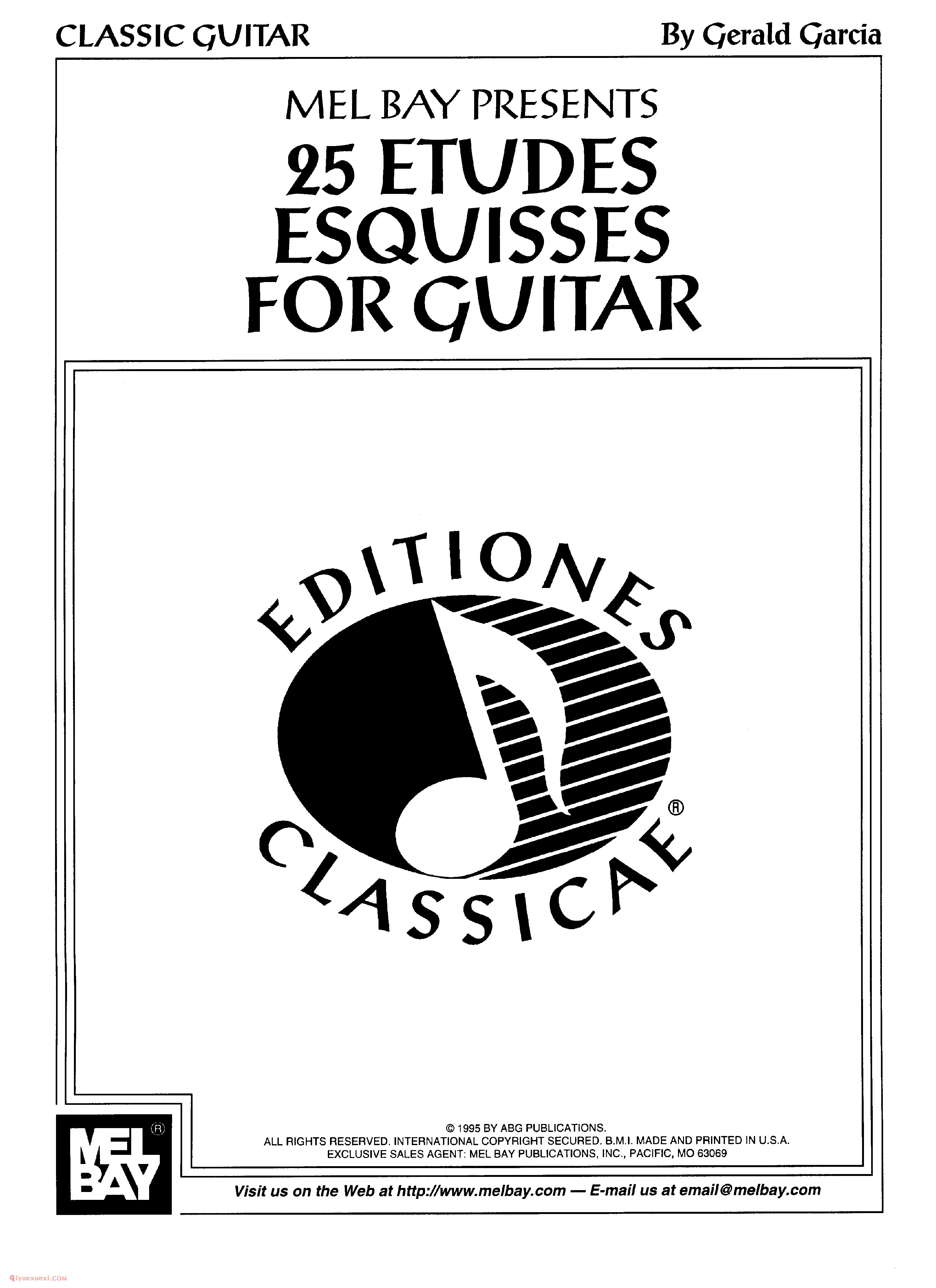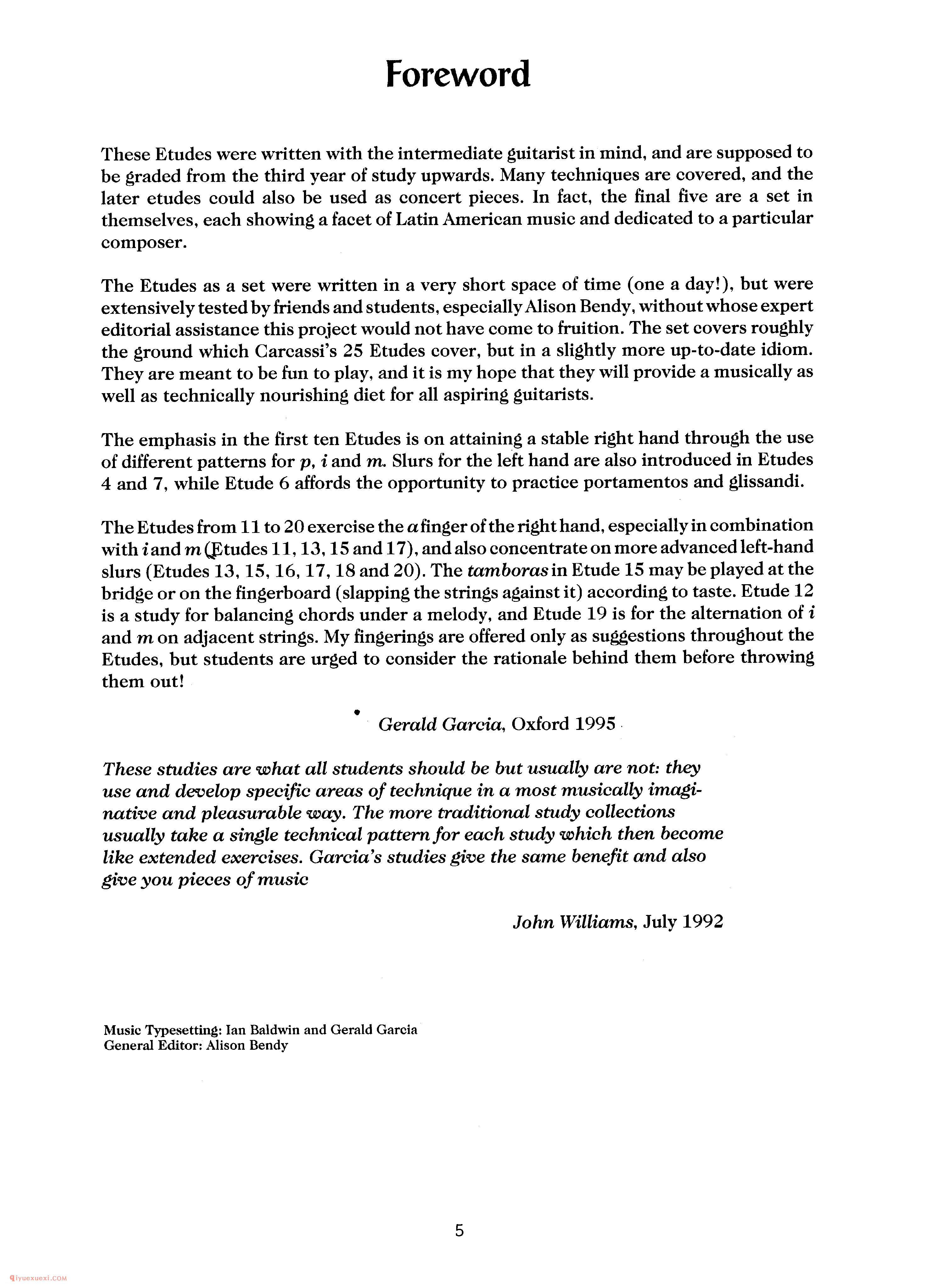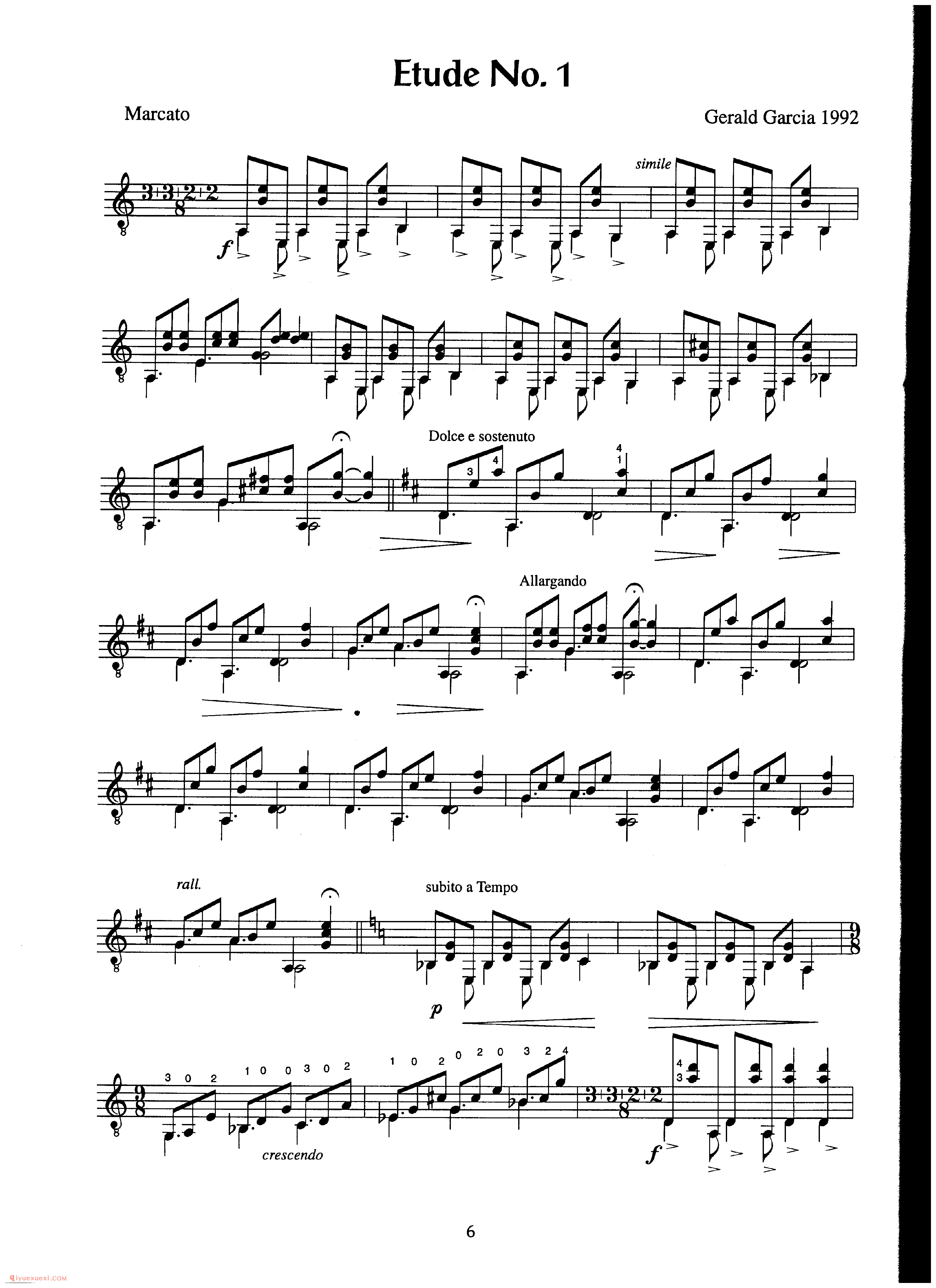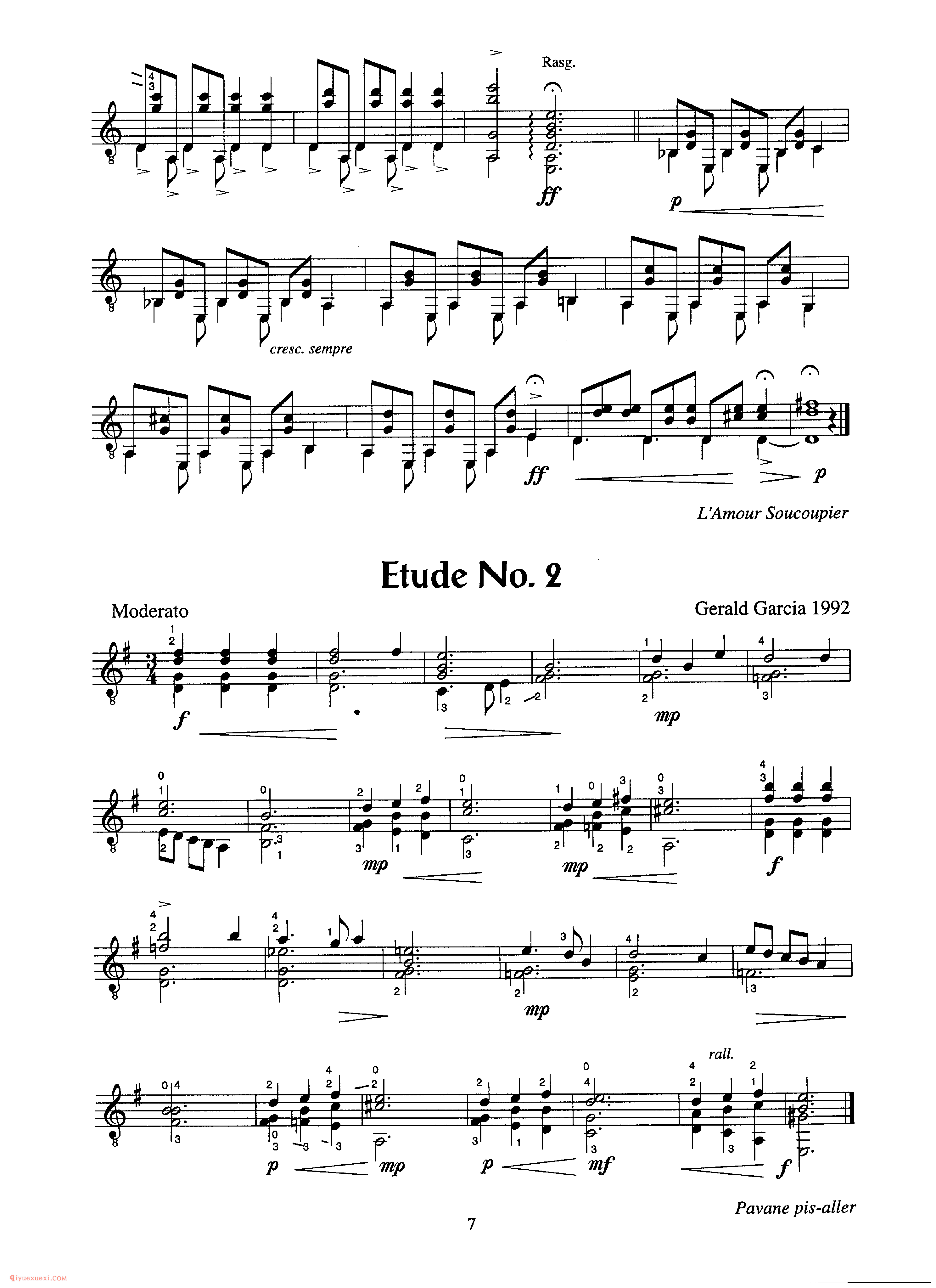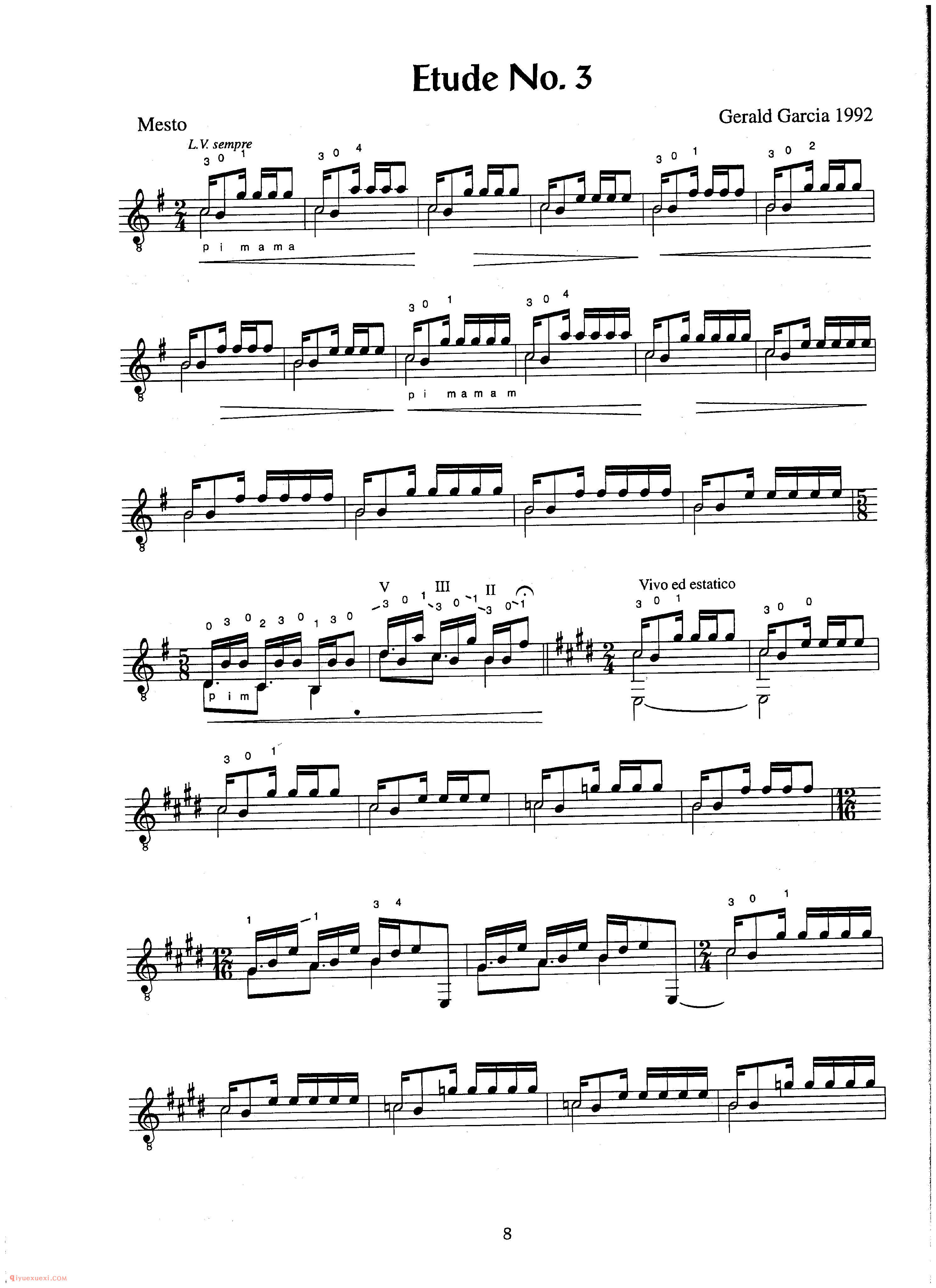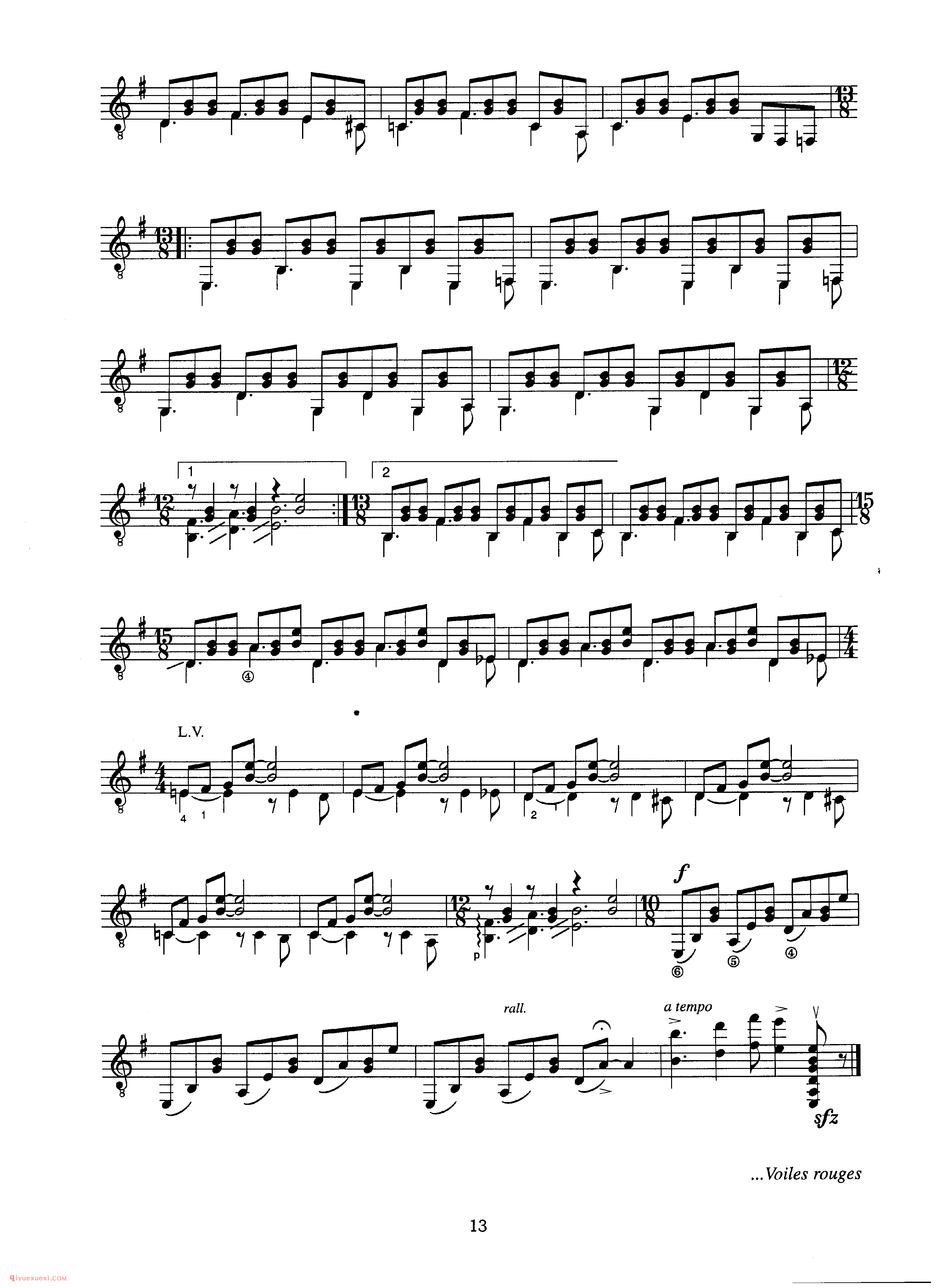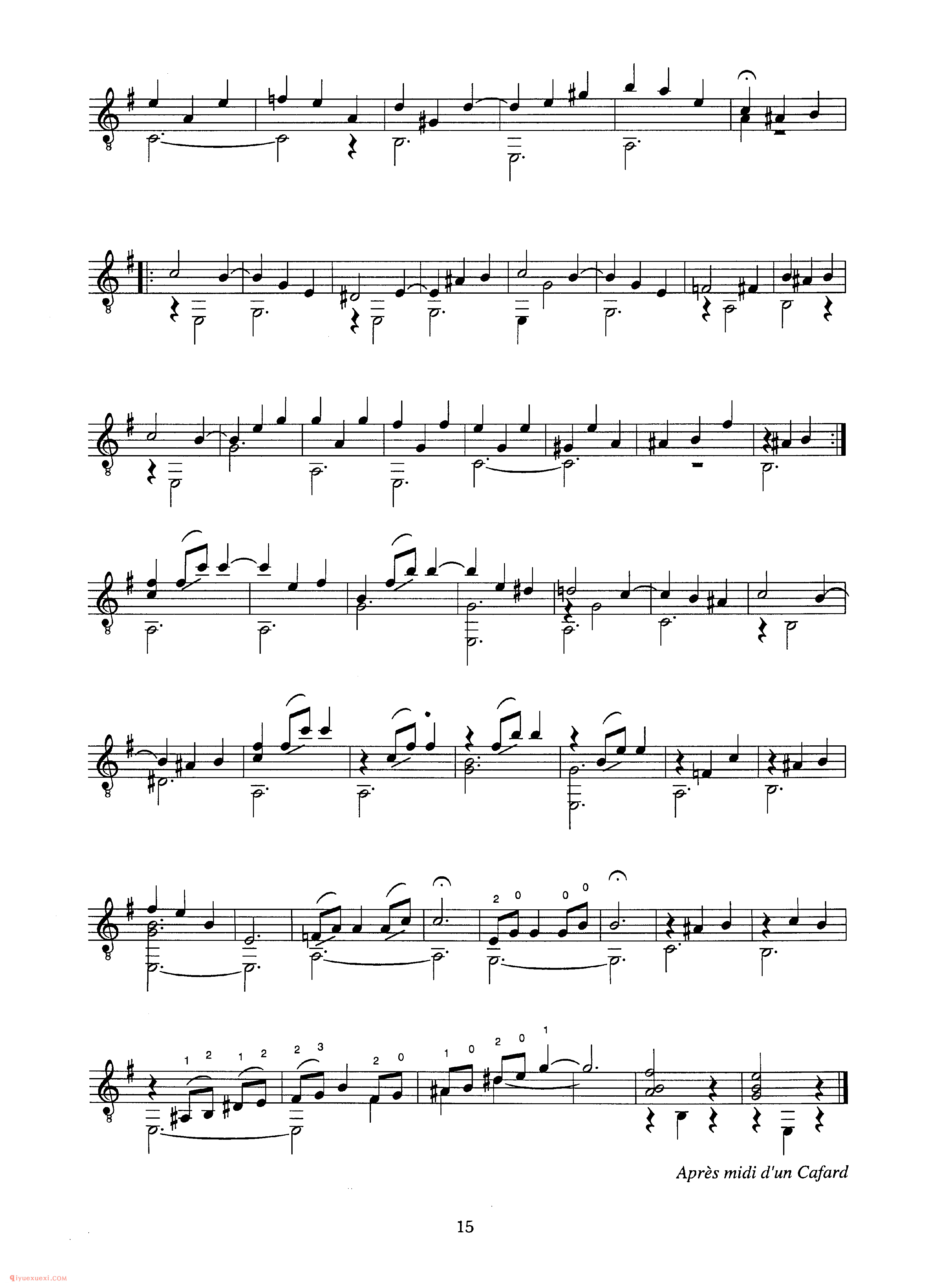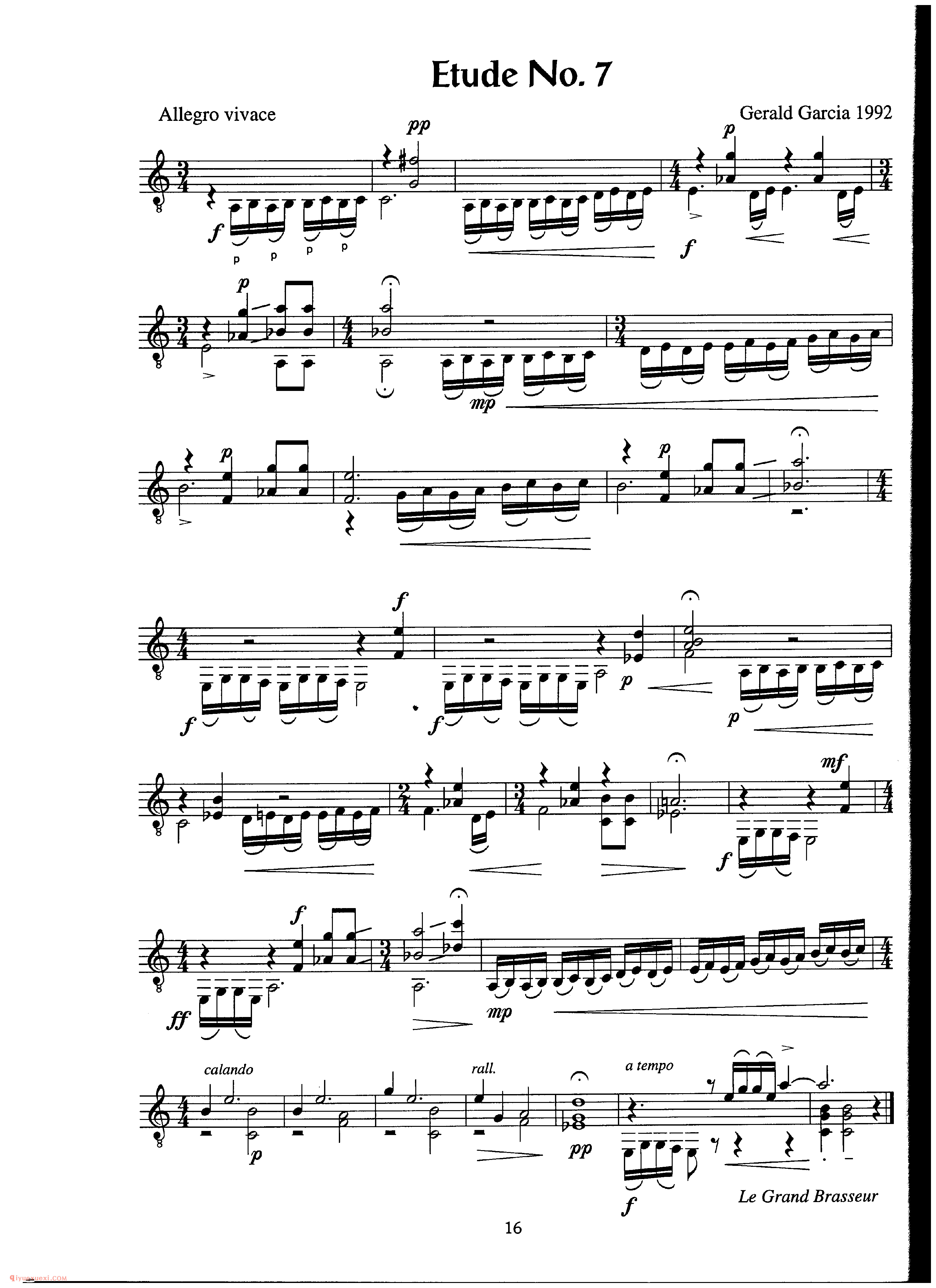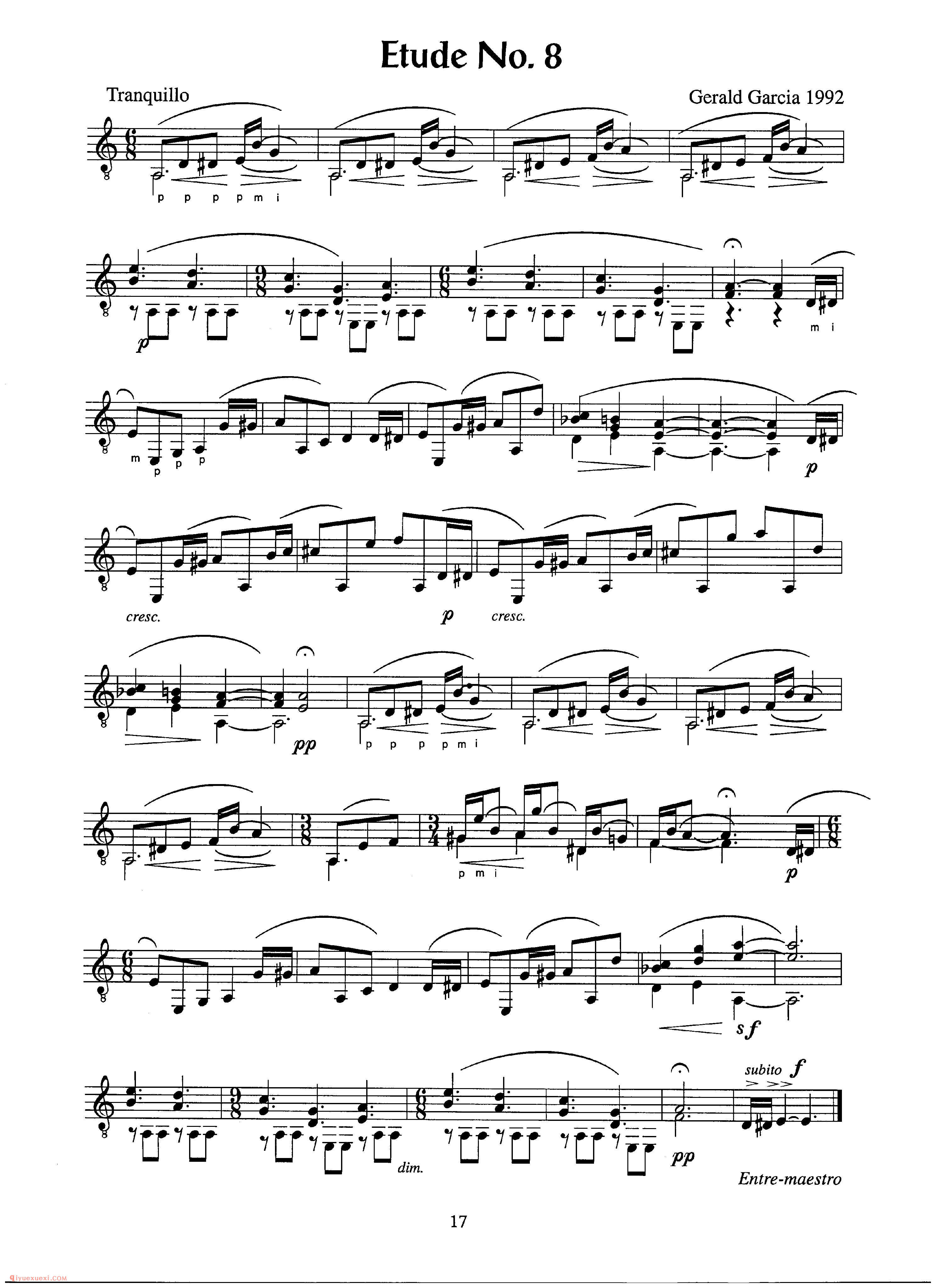当谢家齐1979年第一次出现在著名的维格摩尔音乐厅(Wigmore Hall)之后,他获得了几乎众口一词的高评价:“罕见的高质量的演奏”;“如果你喜欢听吉他,那么谢家齐无疑是你最应关注的演奏家之一”……那是一场三个人的音乐会,约翰·威廉斯和帕科·佩纳都是如日中天的吉他大师,但谢家齐丝毫没有被他们的光芒所遮蔽。
在爱丁堡、爱尔德堡、切尔滕纳姆、索斯班克……等一般在英国举办的大型国际艺术节总少不了他的捧场,同时,他的音乐也通过广播和电视传到了世界各地。谢家齐的足迹遍及远东、欧洲、澳洲,他还是第一个来到中国演奏的英国吉他演奏家,如果不是因为受伤,相信1996年他陪同威廉斯访华演出时,会给中国的吉他爱好者留下更加美好的印象。
谢家齐和很多世界顶尖的音乐家和音乐团体共同演出过,包括伦敦交响乐团、香港管弦乐团、约翰·威廉斯、帕科·佩纳、理查德·贝克等等。尤其是与长笛演奏家康维(Clive Conway)有着长期而愉快的合作。在录音方面,只要稍加留意便不难发现,谢家齐在八十年代末、九十年代初,是Naxos唱片公司吉他唱片的主角。
作为一个演奏家,谢家齐也是多才多艺的。为了更好的感受文艺复兴以及巴洛克音乐的魅力,他也是演奏鲁特琴和比维拉的高手。
当很多人在Naxos的唱片上看到Gerald Garcia这样的名字的时候,都很难想象这会是一个出生于香港的中国人,尤其是这些唱片上都没有附上他的照片。
除了演奏之外,谢家齐在作曲方面也投入了大量的精力。已经有四张唱片的全部曲目都出自他的改编。另外,他为中级吉他演奏者创作的25首草图练习曲也已被霍尔姆奎斯特(John Holmquist)在Naxos公司录制了唱片。
与此同时,谢家齐的教学活动也从未停止过。在英国、比利时、德国、美国,他是很多培训活动以及研讨会的主要教师和发起者。
Foreword
These Etudes were written with the intermediate guitarist in mind, and are supposed tobe graded from the third year of study upwards. Many techniques are covered, and thelater etudes could also be used as concert pieces. In fact,the final five are a set inthemselves, each showing a facet of Latin American music and dedicated to a particularcomposer.
The Etudes as a set were written in a very short space of time (one a day!), but wereextensively tested by friends and students, especially Alison Bendy, without whose experteditorial assistance this project would not have come to fruition. The set covers roughlythe ground which Carcassi's 25 Etudes cover, but in a slightly more up-to-date idiom.They are meant to be fun to play, and it is my hope that they will provide a musically aswell as technically nourishing diet for all aspiring guitarists.
The emphasis in the first ten Etudes is on attaining a stable right hand through the useof different patterns for p, i and m. Slurs for the left hand are also introduced in Etudes4 and 7, while Etude 6 affords the opportunity to practice portamentos and
glissandi.
The Etudes from 11 to20exercise the afinger of the right hand, especially in combinationwithiand m(Etudes 11,13,15 and 17), and also concentrateon more advanced left-handslurs (Etudes 13,15,16,17,18 and 20). The tamboras in Etude 15 may be played at thebridge or on the fingerboard (slapping the strings against it) according to taste.Etude 12is a study for balancing chords under a melody, and Etude 19 is for the alternation of iand m on adjacent strings. My fingerings are offered only as suggestions throughout theEtudes, but students are urged to consider the rationale behind them before throwingthem out!
Gerald Garcia, Oxford 1995 .
These studies are wohat all students should be but usually are not: theyuse and develop specific areas of technique in a most musically imagi-native and pleasurable oay.The more traditional study collectionsusually take a single technical pattern for each study which then beco
me
like extended exercises. Garcia's studies give the same benefit and alsogive you pieces of music
John Williams, July 1992
